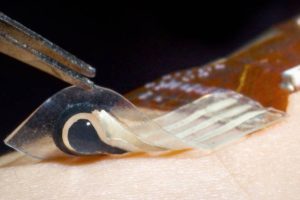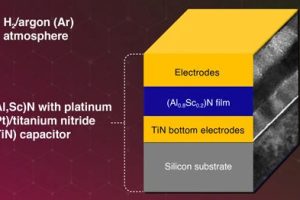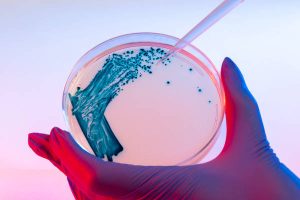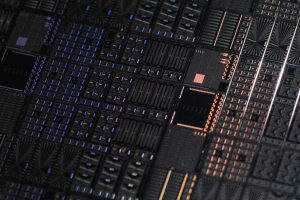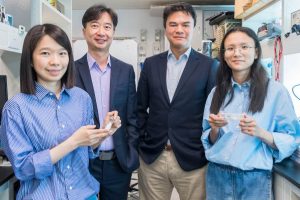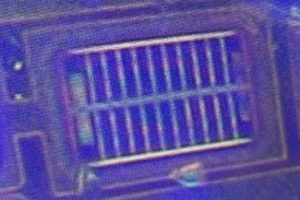Researchers at the Chinese Dalian Institute of Chemical Physics have produced stable organic redox compounds for use in aqueous flow batteries. “Organic redox-active molecules [ORAMs] are abundant and diverse, offering significant potential for energy storage, particularly in aqueous organic flow batteries,” according to the Institute. “However, ensuring the stability of the ORAMs during the charge and discharge process is critical, ...
Research
The latest electronics research news from within the industry and universities from around the world.
Stretchy gel sensor measures biomarkers on dry skin
Health-related chemicals can be detected on dry skin, according to the National University of Singapore (NUS), which developed a stretchable ‘ionic-electronic bilayer hydrogel’ sensor with the Singapore Agency for Science, Technology and Research (A*Star). The chemicals are known as solid-state epidermal biomarkers. “These biomarkers, which include cholesterol and lactate, are found in the stratum corneum, the outermost layer of the ...
Another glimpse behind the superconductivity curtain
Emerging electron pairs in an insulator hint of a hidden mechanism that could be exploited for designer ‘high-temperature’ superconductors. Superconductors need electrons to pair, and then many pairs to become coherent inside the material. “The electron pairs are telling us that they are ready to be superconducting, but something is stopping them,” said Ke-Jun Xu, a researcher at Stanford University’s ...
Modern twist on clockwork stores more energy
Forget exploiting carbon nanotubes electrochemically, and just wind them up like clockwork if you want to store energy. This is not quite the message that researchers at the University of Maryland Baltimore County are delivering, but it might as well be as a team from there is storing 2.1MJ/kg in twisted carbon nanotubes – more, weight-for-weight, than Li-ion chemistry can ...
Switch to scandium for high temperature ferroelectrics
Tokyo Tech has picked aluminium scandium nitride (AlScN) to make ferroelectric films that remain stable at up to 600°C in hydrogen. “This high stability makes them ideal for high-temperature manufacturing processes under the H2-included atmosphere used in fabricating advanced memory devices,” said the university. “Compared to existing ferroelectric materials, these films maintain their ferroelectric properties and crystal structure even after ...
Just what are microbial sensors capable of?
The Defense Advanced Research Projects Agency (DARPA) has teamed up with Massachusetts-based Draper to streamline the design of microbe-based electronic sensors. “Microbes have the potential to be developed as biological sensors that can collect vital information about the environments they naturally inhabit,” said Draper biotechnologist Chris Vaiana. “Our goal is to support DARPA in mapping the modular design of microbe-based ...
300mm silicon-based quantum dot spin qubits
Imec has used 300mm wafers to demonstrate silicon-based quantum dot spin qubit processing. The devices had an average charge noise of 0.6µeV/√Hz at 1Hz. “In view of noise performance, the values obtained are the lowest charge noise values achieved on a 300mm fab-compatible platform,” according to the Belgian research lab. “By demonstrating those values, repeatedly and reproducibly this work makes ...
Making a ‘biodegradeable’ plastic biodegradeable
PLA – poly lactic acid – is a 3d printable polymer that can be made from maize and is biodegradable. Except, it is seldom publicised, that it is only biodegradeable in industrial-scale high temperature processes, and will last of years in the open environment. Now researchers at the Toulouse Biotechnology Institute have engineered a designer enzyme – hyperthermostable PLA hydrolase ...
Self-healing protection for perovskite solar
City University of Hong Kong (CityUHK) has developed another approach to quell the self-destructive tendencies of perovskite solar cells in the face of moisture. It is a corrosion inhibitor that tackles ionic defects in the perovskite layer within the solar cell stack, even those created after manufacture. “Applying a living passivator on the perovskite surfaces enhances their resistance to environmental ...
Digitally-tuned capacitors for 6G RF front-ends
Nanusens has demonstrated a mems digitally-tuneable capacitor for 5G and 6G RF front-ends, that is compatible with CMOS IC processing and can be integrated with circuitry. The Q-factor is above 100 at 1GHz, and the four-bit capacitor has a minimum capacitance of 450fF (30fF/capacitor) with them all off and tunes up to ~1pF – a capacitance ratio of 2.2 which ...
 Electronics Weekly Electronics Design & Components Tech News
Electronics Weekly Electronics Design & Components Tech News
